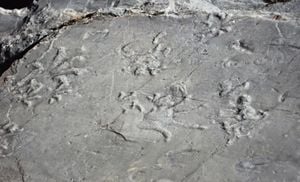Scientists have made significant strides in unraveling the origin of the asteroid responsible for the mass extinction event 66 million years ago, which famously extinguished the dinosaurs. A new study published on August 16, 2024, indicates this catastrophic space rock originated beyond Jupiter's orbit.
This finding is quite groundbreaking as it disputes earlier theories, which held different views on the composition and path of the asteroid leading to the Chicxulub impact. Through innovative techniques and careful analysis, researchers are shedding light on this mysterious cosmic event.
The Chicxulub impactor, known for its colossal size, played a critical role in Earth’s geological history. The recent research, spearheaded by Mario Fischer-Godde, emphasizes its connection to wider questions about Earth and our solar system.
To understand the origins of the impactor, scientists utilized data from ruthenium isotopes retrieved from sediment layers at the impact site. These isotopes, linked to the asteroid, offer insights not only about the asteroid's composition but also its path through space.
One fascinating aspect of this study is the categorization of the Chicxulub asteroid as a C-type, or carbonaceous asteroid. This classification is comparatively rare among space rocks, highlighting its distinctiveness among the more frequently occurring S-type asteroids.
The study suggests C-type asteroids may be more prevalent than previously thought and could also hold clues about the origins of water on Earth. Understanding where these asteroids come from could help scientists decipher how water arrived on our planet and the potential for life on other celestial bodies.
Researchers utilized methods to distinguish between the types of asteroids through the measurement of isotopes. By confirming the isotopes’ origin, they validated their conclusions about the Chicxulub impactor.
One key takeaway from the study is the clarification surrounding the nature of the Chicxulub asteroid; it was not, as once theorized, a comet. Whereas comets are icy bodies found at the outer edges of the solar system, this asteroid had a significantly different composition.
The revelations from this research pose critical ramifications, helping scientists understand not only past extinction events but also the potential future threats from similar celestial objects. The research holds significant promise for planetary science, asteroid impact studies, and our overall comprehension of our solar system.
Published findings provide soil samples and advanced lab techniques unique to the research team, showcasing the depth of their analytical capabilities. Such advanced measurement techniques were pivotal to confirming the origin of the Chicxulub impactor.
This combination of scientific inquiry and innovative technology allows researchers to revisit age-old questions with fresh eyes. With scientists now focused on C-type asteroids, they are poised to explore the cosmos with renewed vigor.
Further research will undoubtedly continue to expand our comprehension of the cosmos and our place within it. And who knows what other secrets lie beyond our own solar system?
This study opens avenues for more questions, including those related to astrobiology and planetary formation. Understanding the origins and compositions of such asteroids could eventually guide space missions, targeting potential resources and threats across the solar system.
Overall, breakthroughs like these remind us how much there is still to learn about our universe. The findings not only add to our historical narrative but provide insight on future endeavors, reaffirming our curiosity about what lies beyond.
To explore the full details of this fascinating study, readers can refer to the publication within the journal Science. It offers comprehensive insights and methodology for those interested.



